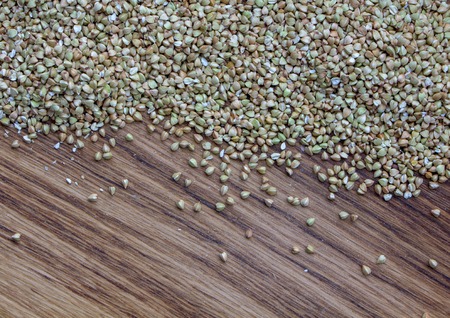Understanding Protein Needs During Vrat
In India, observing vrat (fasting) is an age-old tradition deeply rooted in our spiritual and cultural fabric. Whether it is Navratri, Ekadashi, or other auspicious occasions, devotees across the country embark on fasting journeys with great devotion. While the focus often lies on abstaining from grains and certain foods, it is equally important to nourish the body mindfully. Including adequate protein in your vrat diet plays a vital role in supporting your strength, sustaining energy levels, and maintaining overall well-being during these sacred periods.
Protein is essential for repairing tissues, building muscle strength, and keeping you feeling satiated for longer hours—especially when meal options are limited during fasting. Many people experience fatigue or weakness during vrat, which can be alleviated by consciously adding protein-rich sattvic foods such as paneer, nuts, seeds, milk, lassi, sabudana, and amaranth to your meals. This mindful approach not only honors the spirit of the fast but also ensures that your body receives balanced nourishment so you can continue your daily activities with vitality and devotion.
Paneer: The Desi Vegetarian Powerhouse
When it comes to vrat (fasting) in India, finding wholesome protein sources that align with traditional dietary guidelines can be a challenge. Paneer, or Indian cottage cheese, stands out as a beloved and versatile choice among the fasting community. Rich in protein and calcium, paneer offers sustained energy and satiety, both crucial during periods of restricted food intake. Not only does it support muscle repair and overall vitality, but its sattvic nature also makes it suitable for most vrat observances.
Why Choose Paneer During Vrat?
Paneer is celebrated for being light on the digestive system while still delivering essential nutrients. Unlike lentils or eggs, which are typically avoided during many fasts, paneer fits seamlessly into vrat rules observed across different regions of India. It is especially beneficial for vegetarians who need to maintain their protein intake without breaking their fast.
Nutritional Value of Paneer
| Nutrient | Per 100g Paneer |
|---|---|
| Protein | 18g |
| Calcium | 208mg |
| Fat | 20g |
| Carbohydrates | 1.2g |
| Calories | 265kcal |
Vrat-Friendly Ways to Enjoy Paneer
The beauty of paneer lies in its adaptability to different regional tastes and traditional vrat recipes. Here are some local ways to include paneer in your fasting meals:
- Paneer Tikki: Combine grated paneer with boiled potatoes, sendha namak (rock salt), green chillies, and fresh coriander. Shallow fry on a tawa using ghee for a nourishing snack.
- Dahi-Paneer Chaat: Toss soft paneer cubes with chilled dahi (curd), roasted jeera powder, and fresh mint for a cooling salad.
- Kuttu Atta Paneer Paratha: Use buckwheat flour dough stuffed with spiced paneer to create filling parathas perfect for suhoor or iftar during Navratri or other fasting days.
- Pudina Paneer Skewers: Marinate paneer cubes in a blend of hung curd, mint, sendha namak, and ginger paste; grill until lightly charred for an aromatic treat.
By honouring local traditions and making mindful choices, you can harness the nourishing qualities of paneer during vrat. Let this humble ingredient become your trusted companion on your spiritual journey, supporting both your body and soul throughout your fasting period.

3. Nuts and Seeds: Nature’s Little Energy Boosters
When it comes to vrat, nuts and seeds are cherished for their sattvic qualities and potent energy-boosting properties. Almonds, walnuts, pumpkin seeds, and chia seeds are not just protein-rich, but also provide essential healthy fats, vitamins, and minerals that support the body during fasting periods. These little powerhouses are easily incorporated into a variety of traditional vrat recipes across India.
The Power of Almonds and Walnuts in Fasting
Almonds (badam) and walnuts (akhrot) are often soaked overnight and consumed in the morning during vrat to aid digestion and maximize nutrient absorption. They can be chopped and sprinkled over fruits or mixed into vrat-friendly kheer, adding both texture and nourishment. Their natural crunch and delicate flavors blend seamlessly with Indian fasting dishes.
Pumpkin Seeds & Chia: Modern Touches to Traditional Vrat Foods
Pumpkin seeds (kaddu ke beej) offer a contemporary twist while remaining within the boundaries of vrat foods. Sprinkle them over sabudana khichdi or blend them into energy balls with dates for a nutritious snack. Chia seeds, though not traditionally Indian, have found a place in urban vrat kitchens—soaked chia can be added to milk or lassi for a wholesome boost.
Cultural Acceptance and Ritual Use
Nuts and seeds are widely accepted in most Indian fasting traditions due to their purity and ease of digestion. They provide sustained energy, helping devotees maintain focus during prayer and meditation. Whether enjoyed as a handful between meals or as an ingredient in vrat laddoos and barfis, these nature-given gifts align perfectly with the principles of balance and self-care that are central to vrat observances.
4. Milk & Lassi: Time-Tested Sattvic Refreshment
Milk and lassi have long been cherished in Indian households, especially during vrat (fasting) periods when sattvic, nourishing foods are preferred. These dairy staples not only quench thirst and cool the body but also offer a gentle source of protein that aligns with traditional fasting guidelines. Let us revisit the wholesome potential of milk and lassi, understanding how they hydrate, energise, and support our body’s needs during these sacred times.
Why Milk Is a Vrat Favourite
In Indian culture, milk is considered a complete food—symbolising purity and abundance. During vrat, consuming milk provides easily digestible proteins (casein and whey), calcium for bone health, and natural sugars to keep energy stable. It serves as a base for many vrat-friendly drinks like badam doodh or saffron-infused kheer.
Lassi: Cooling Probiotic Goodness
Lassi—a probiotic-rich yogurt drink—is another time-tested favourite during fasting. Whether sweetened with honey or flavoured with cardamom, lassi helps maintain gut balance, supports digestion, and delivers high-quality protein. Its cooling effect is especially valued during warmer months or after puja rituals.
Comparing Milk & Lassi for Vrat Nutrition
| Dairy Staple | Protein per 100ml | Main Benefits | Vrat-Friendly Uses |
|---|---|---|---|
| Milk | ~3.2g | Hydrating, energising, rich in calcium and B-vitamins | Doodh, kheer, fruit shakes, badam milk |
| Lassi | ~3g (varies by yogurt) | Cools body, aids digestion with probiotics, satiating | Sweet lassi, elaichi lassi, rose lassi |
Sattvic Rituals with Dairy Delights
Sipping on warm milk before sunrise or enjoying a chilled glass of lassi after your puja can be both grounding and uplifting. These rituals are more than dietary—they help you reconnect with tradition while gently nourishing your system throughout the vrat period.
5. Sabudana: The Vrat Favourite
Sabudana, or tapioca pearls, holds a special place in Indian vrat (fasting) traditions, especially during festivals like Navratri and Shivratri. It is not just a source of quick energy but also embodies the comfort and satiety that fasting foods aim to provide. While sabudana itself is primarily a carbohydrate-rich food, it becomes an integral part of a balanced vrat thali when paired thoughtfully with protein sources.
Why Sabudana Is Chosen for Vrat
Sabudana is light on the stomach and easy to digest, making it ideal for those observing fasts. Its neutral taste allows for versatile preparation—whether as khichdi, vada, or kheer. Most importantly, sabudana is permitted in almost all Indian fasting rituals due to its non-cereal nature.
Combining Sabudana with Protein-Rich Ingredients
To make your vrat meal more nourishing, combine sabudana with peanuts, roasted makhana, or paneer cubes. Peanuts are especially popular in sabudana khichdi, adding crunch, flavour, and a good dose of plant-based protein. Alternatively, you can sprinkle seeds like pumpkin or sunflower over your sabudana dishes for an extra protein boost.
Creative Ways to Enjoy Sabudana During Vrat
For a wholesome experience, try preparing sabudana tikki stuffed with paneer or adding chopped nuts and milk to sabudana kheer. Pairing sabudana with amaranth flour in tikkis or cutlets enhances both the texture and the nutritional profile of your vrat plate. By mindfully combining sabudana with these protein-rich foods, you honour both tradition and your body’s need for nourishment during fasting periods.
6. Amaranth (Rajgira): Wholesome Ancient Grain
Rediscovering Rajgira: A Sacred Indian Superfood
Amaranth, locally known as Rajgira, is much more than just a fasting ingredient—it is a sacred grain deeply woven into India’s traditional rituals and vrat practices. For generations, Rajgira has been celebrated during Navratri, Ekadashi, and other auspicious fasting periods for its purity, satvik nature, and nourishing qualities. This ancient grain has stood the test of time, providing sustenance and strength to countless devotees across the country.
A Protein-Packed Powerhouse for Fasting
One of amaranth’s most remarkable attributes is its impressive protein content. Unlike many grains, Rajgira contains all essential amino acids, making it a complete protein source—an important factor when your diet is restricted during vrat. Just a small portion can help support muscle health, boost energy, and keep you feeling satiated longer. Its high content of iron, magnesium, and fibre further enhances its nutritional profile, promoting both physical vitality and emotional well-being during fasting days.
Creative & Delicious Ways to Enjoy Amaranth During Vrat
The beauty of Rajgira lies in its versatility. Whether puffed, popped, or ground into flour (Rajgira atta), amaranth can be transformed into a variety of vrat-friendly delicacies. Try preparing soft rotis or puris using rajgira atta paired with curd or aloo sabzi for a wholesome meal. Satisfy sweet cravings with rajgira chikki or laddoos made with jaggery and ghee—classic treats that nourish both body and soul. You can also make savoury tikkis or even porridge by cooking amaranth seeds with milk and cardamom for a comforting breakfast option.
Cultural Significance & Mindful Nourishment
Choosing amaranth during vrat is not only about tradition—it’s about honouring your body’s needs while staying connected to centuries-old wisdom. By incorporating Rajgira into your fasting meals, you invite balance and wholeness on both physical and spiritual levels. As you explore new recipes and flavours with this ancient grain, remember that every bite is an act of self-care—a gentle reminder to nourish yourself fully during these sacred times.

